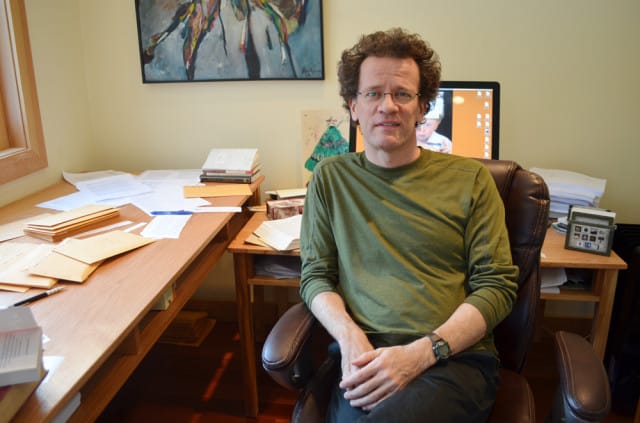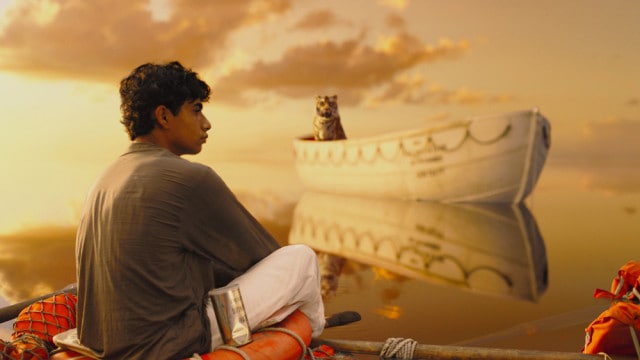
The Sheaf sat down with Yann Martel to discuss his take on the big screen adaptation of The Life of Pi.
In 2001, when Life of Pi was little more than blurb on Canadian author Yann Martel’s agent’s catalogue, Hollywood was already expressing interest in buying the movie rights.
Now, after the immense success of the novel, Life of Pi is premiering on the big screen.
The movie, directed by Ang Lee, best known for Crouching Tiger, Hidden Dragon and Brokeback Mountain, made its debut Nov. 21 in theatres across North America.
“A number of directors got involved and they fell to the side and eventually Ang Lee expressed interest,” Martel said. “I met Ang Lee and had a long evening with him just chatting about the book and other things and then he finally committed.”
Martel read two versions of the early screenplay by Finding Neverland writer David Magee but creatively Martel’s input was limited.
“I’m a writer. I’m not a screenwriter and a script is only one part of a much bigger thing,” Martel said. “I was quite happy to let [Lee] do it and make the movie he wanted to make.
“As a novelist you control everything. It’s not a question of being a control freak but you’re the director, the set designer, the makeup artist, the actor — you’re everything. Being one part of a much bigger thing is not what I’m used to creatively.”
The process of making Life of Pi was not without its hiccups. It took 10 years to put-togehter the final product. Filming was spread out over four years, the same amount of time Martel spent writing the novel. It took 110 days in total to shoot.
“It’s the longest time [Lee] has spent on a movie,” Martel said. “Most movies take two years and it exhausted him. At the end of the process he was really at the end of his tether.”
Lee had his hands full with the project. Although Martel wrote Life of Pi with rich colours and dramatic environments that had the potential to translate into beautiful visuals, these same elements proved difficult to capture on film.
“As I was writing it, it was very cinematic,” Martel said. “It’s a very strong contrasts of colour, it’s a very visual story.”
Location was a hindrance in the shooting process.
“The last thing you want to do in cinema is film on water,” Martel said. “Generally you want to have a fixed land, fixed camera and motion.
“If you do it in a pool, the problem then is that it doesn’t look real.”
For much of the story, the two main characters, a 16-year-old boy named Pi Patel and a 450-pound tiger named Richard Parker, are trapped together on a lifeboat with a hyena, an orangutan and an injured zebra. These animals created obvious risk factors for filming.

Filming with animals, and children, and on water, are three of the biggest “avoid at all costs” procedures in the movie business.
Filming with animals strained the production as animals can not be directed in the same way human actors can.
“You cannot put a tiger with an actor in a confined space. If the actor’s killed… you have a billion dollar lawsuit,” Martel said.
Lee made use of computer-generated imagery to ensure the safety of actor Suraj Sharma, who plays Pi during the scenes on the boat, and for people on the set. According to Martel, this was done flawlessly.
“You really cannot tell what is a [computer generated image] and what is a real tiger. I don’t think it’s ever been done before to that level of technical perfection,” he said.
With his direction and the CGI effects, Lee was able to bring forth moments in the movie that are beyond the capacity of description for the written word.
“Some things in the novel… I didn’t accentuate because it’s not the strength of words. For example, the sinking of the ship. In the [novel, the scene is] literally three words: ‘the ship sank,’ ” Martel said, but it “is a breathtaking scene in the movie. It’s astonishing.”
Martel said that though the movie is visually stimulating, he also considers it to be very faithful to his novel. He noted, however, that Lee did take liberties in the pacing and some minor plot elements.
The last act of the novel is more fleshed-out than in Lee’s presentation of it onscreen and Lee adds a love interest, played by actress Shravanthi Sainath, for the young Pi in India. Although Martel was uninterested in writing a love story he sees the strength of Lee’s addition to the storyline.
“I like that the girl is a dancer. It allows us to see a bit of Indian dancing and it’s a light comedic note to it, too,” Martel said.
Martel found watching the movie for the first time a little bit weird.
“Watching the movie was thrilling, it doesn’t replace the book. I think it’s a complement,” Martel said. “I’ll get a real sense maybe once it actually is out there. We’ll see when it actually comes out next week in North America and how it fares.”
Currently Martel wishes to focus on his family and current writing projects, not screenplays, stating that he has in no way “been bitten by that bug.”
—
Photo: Jenna Mann/The Sheaf